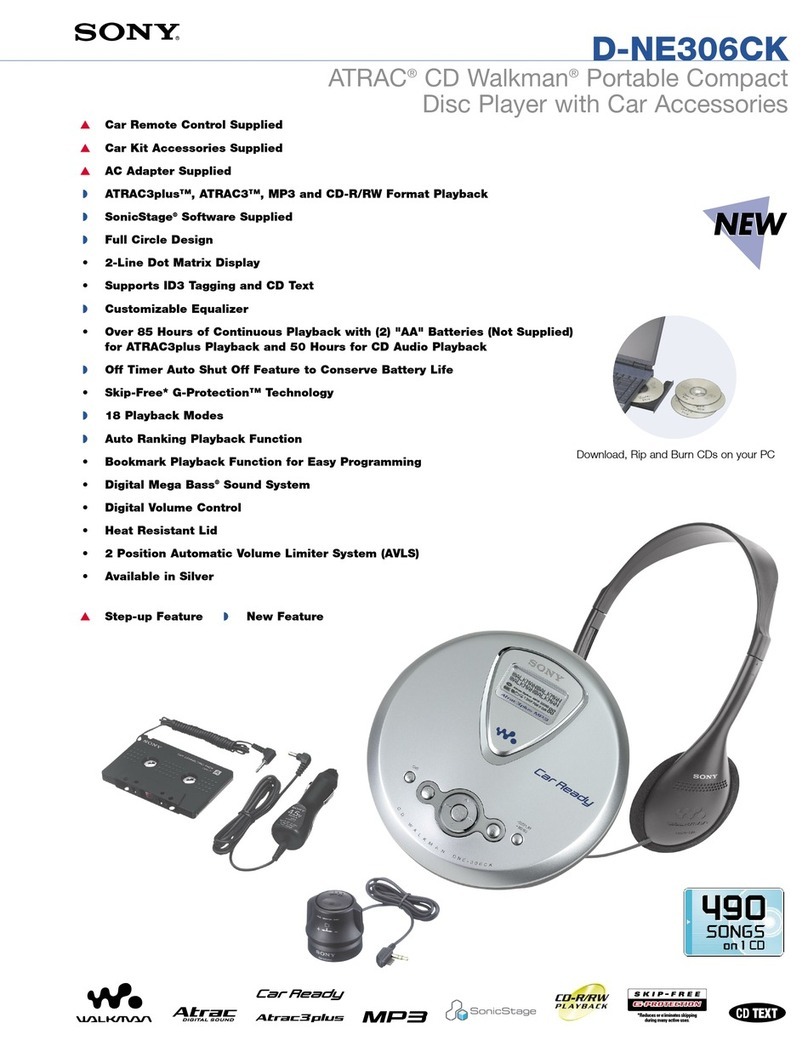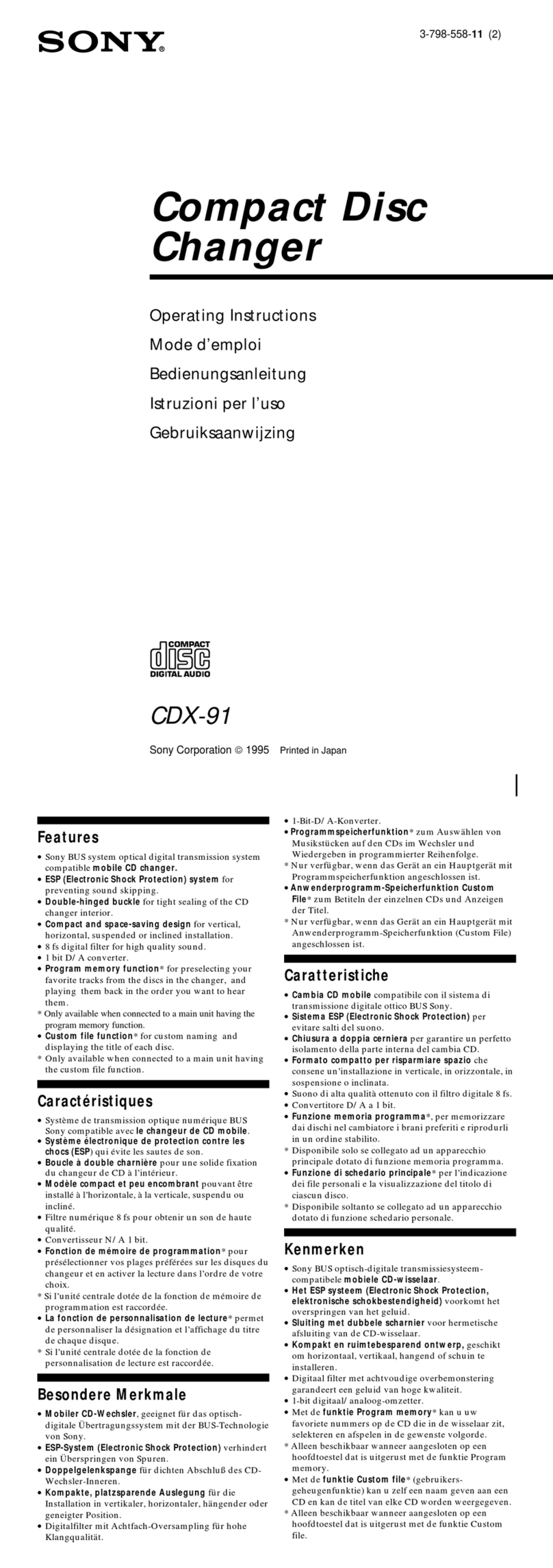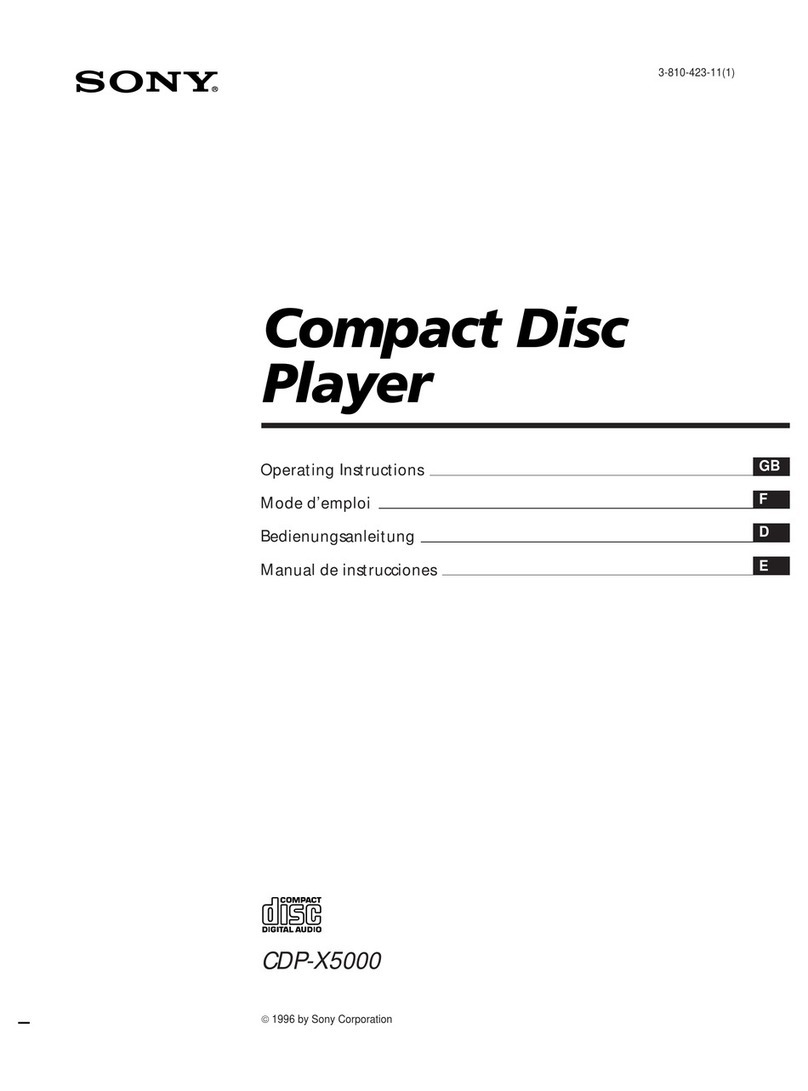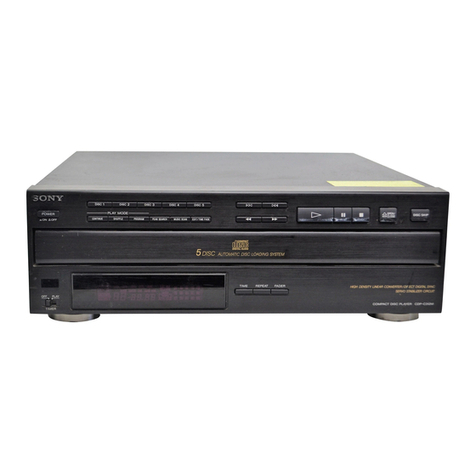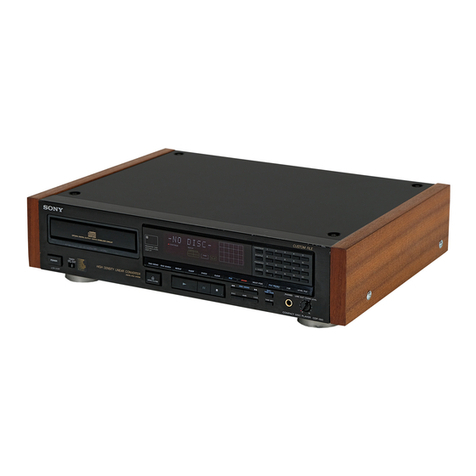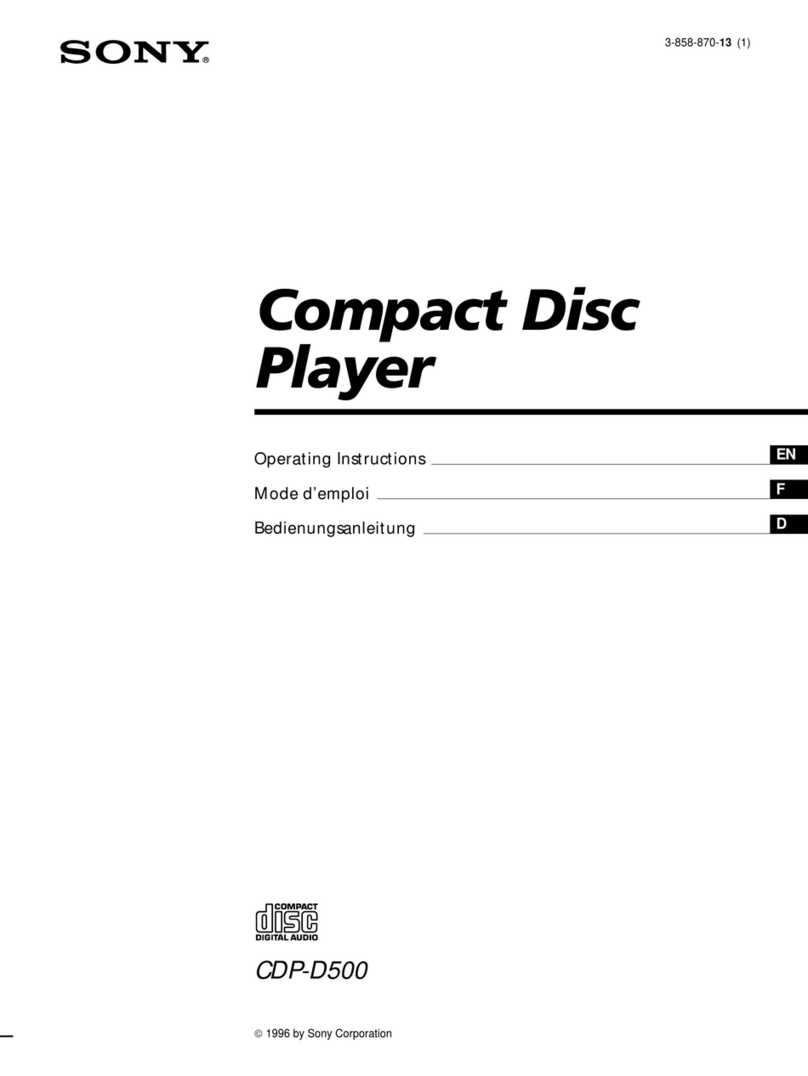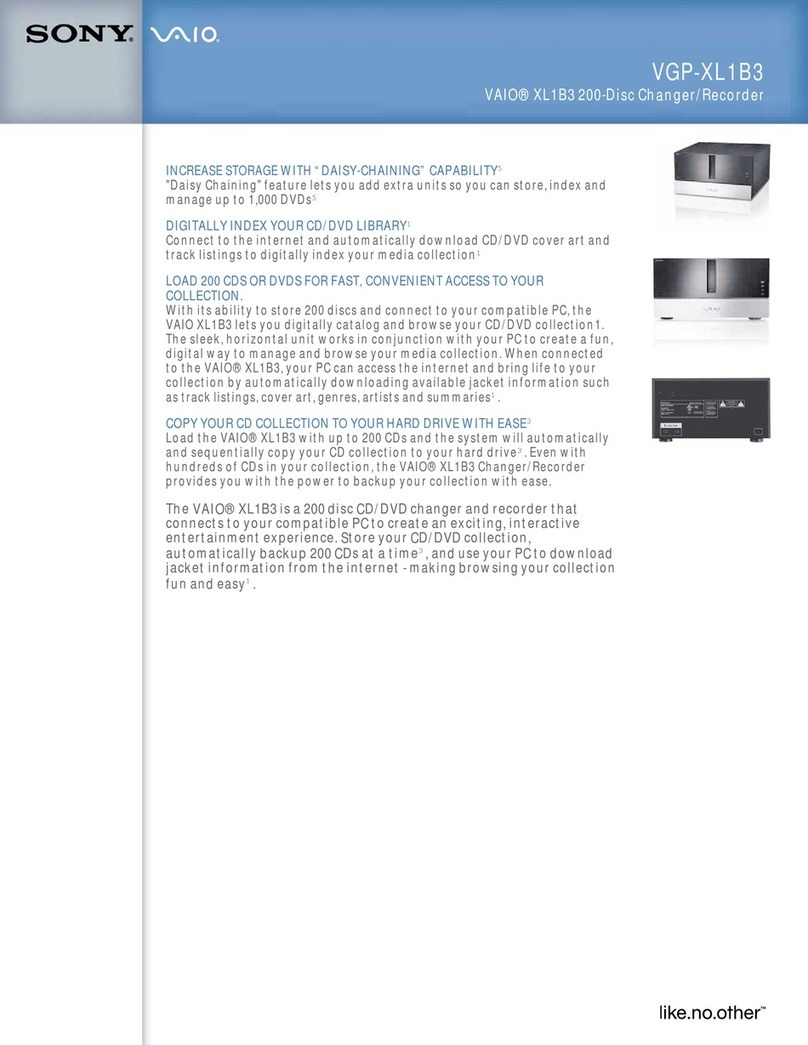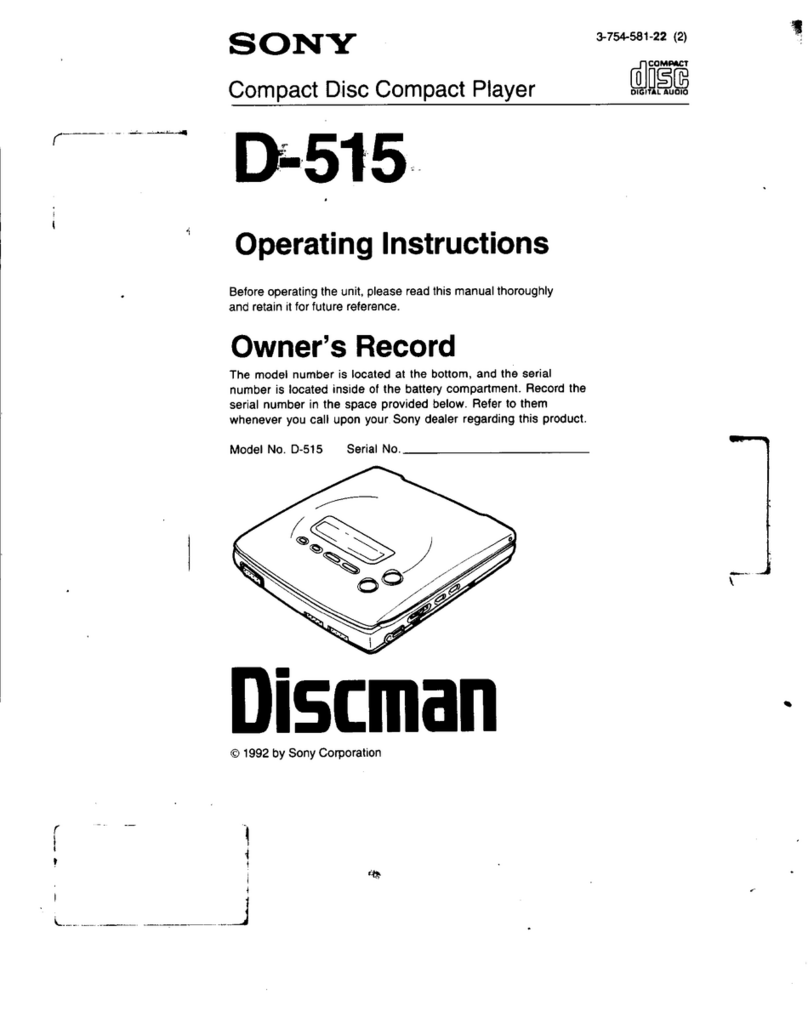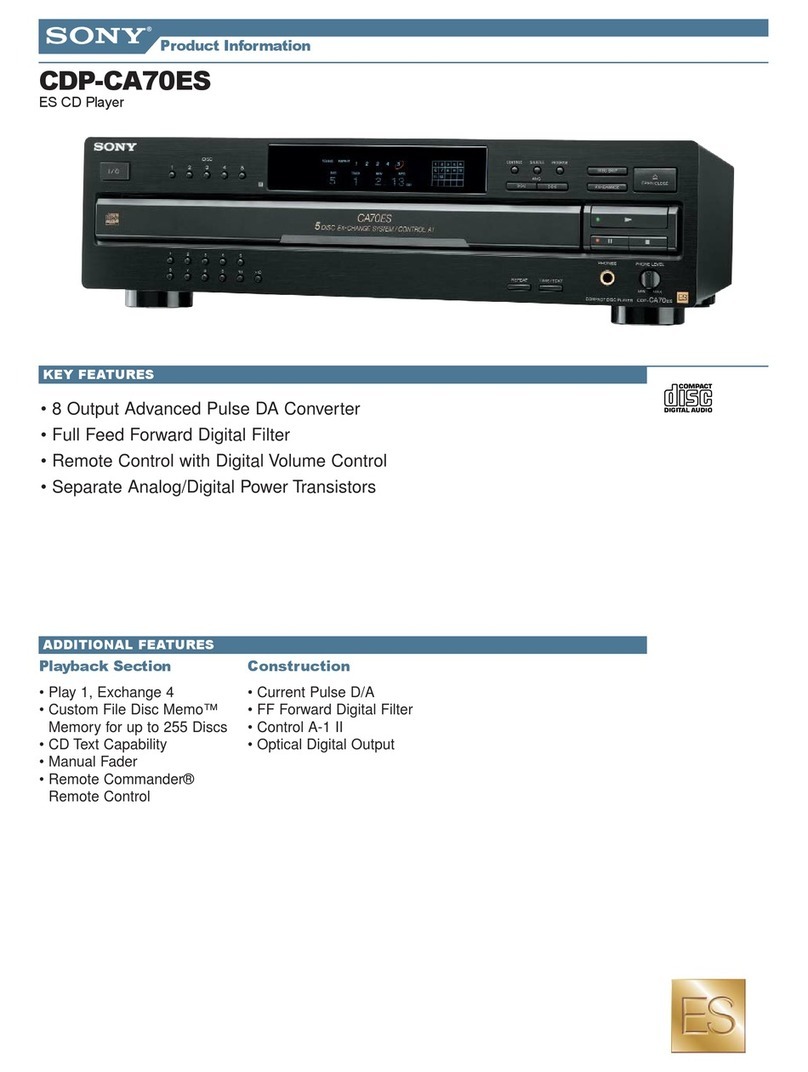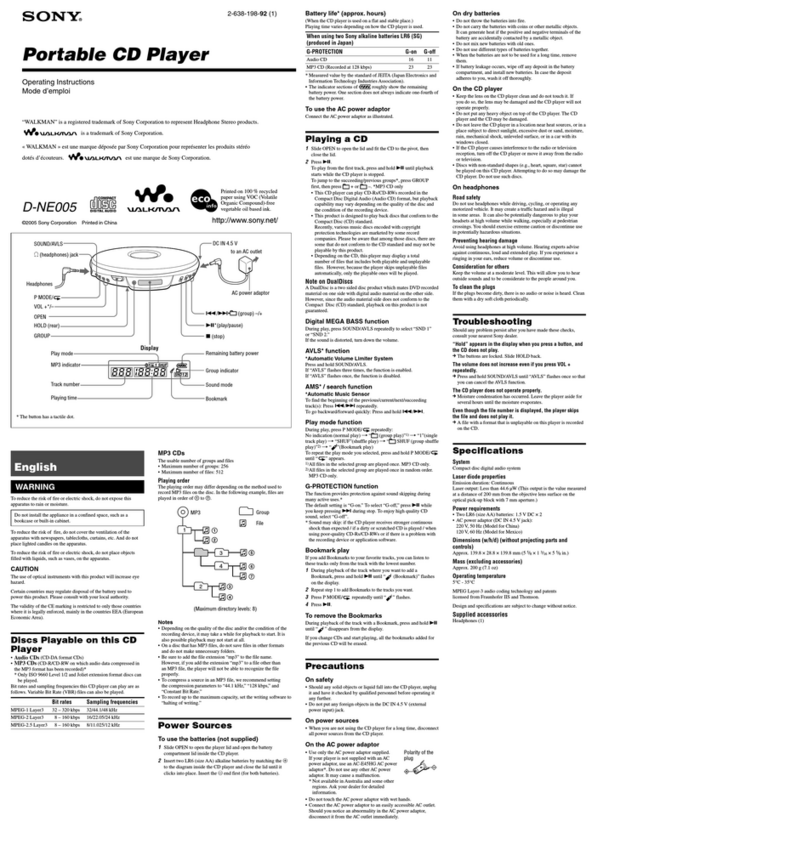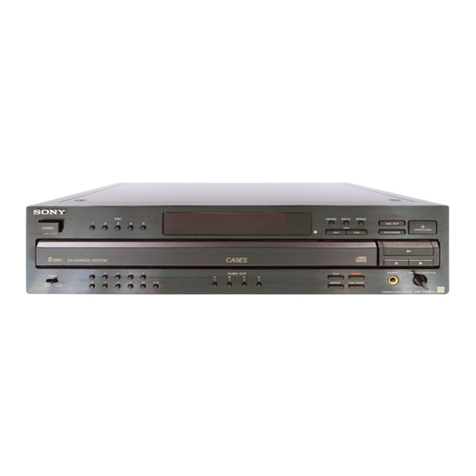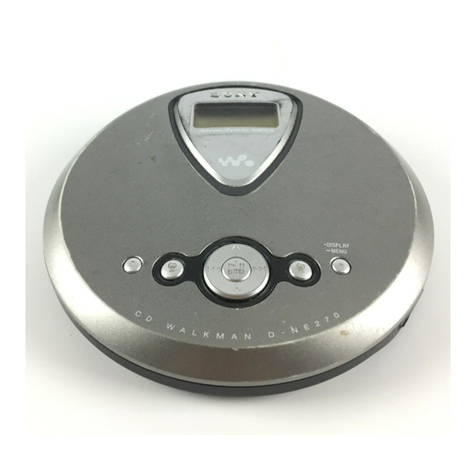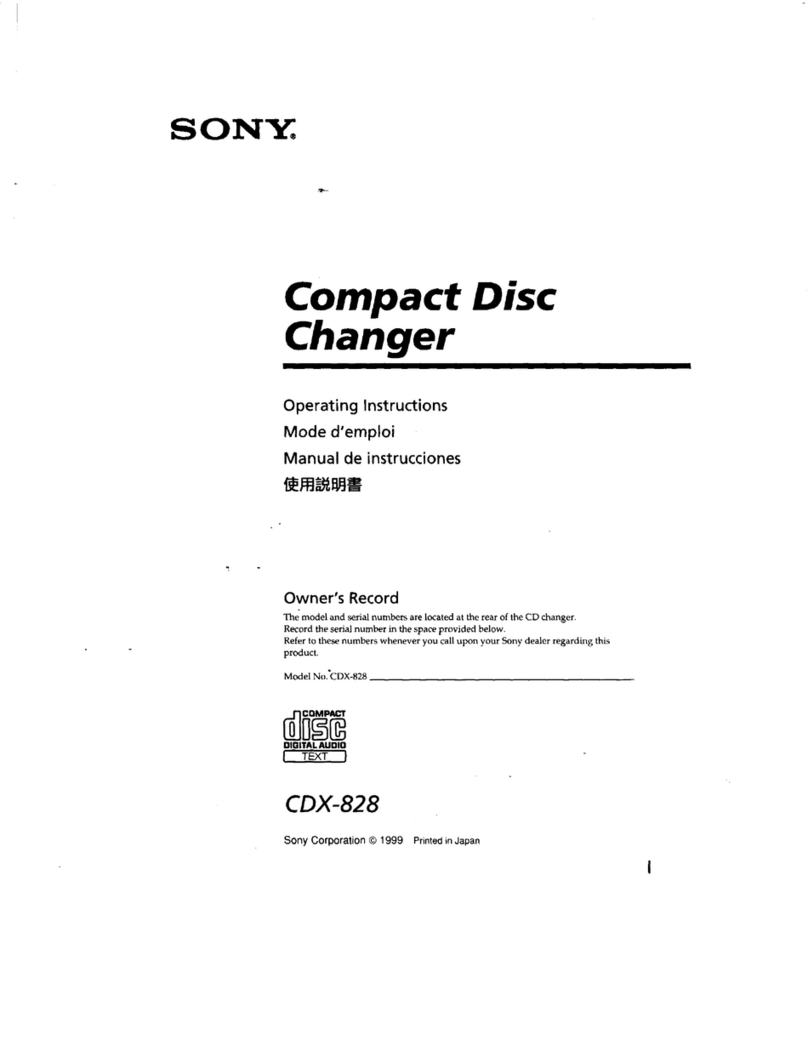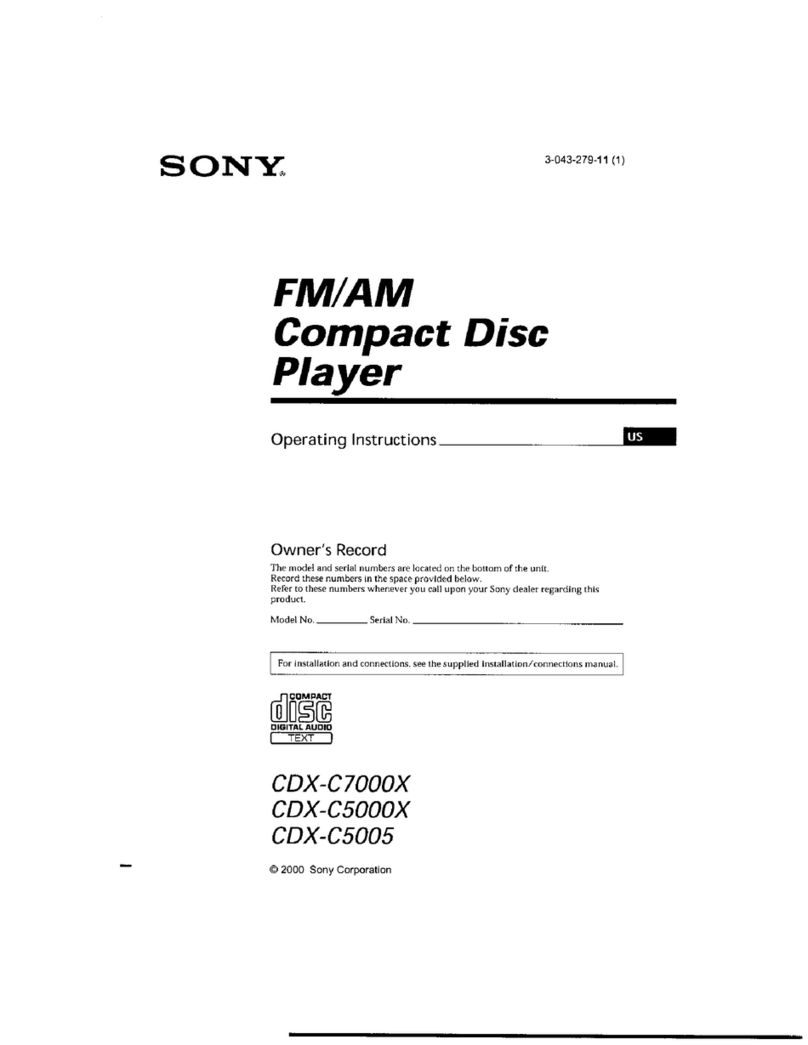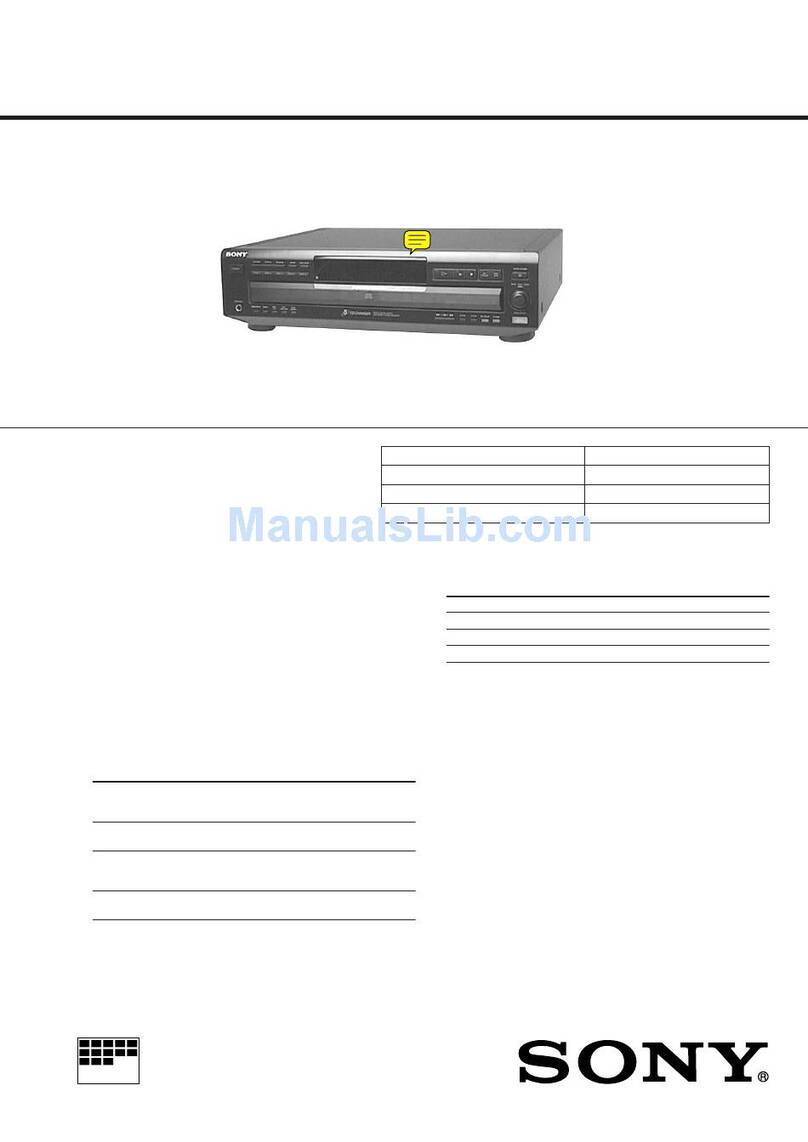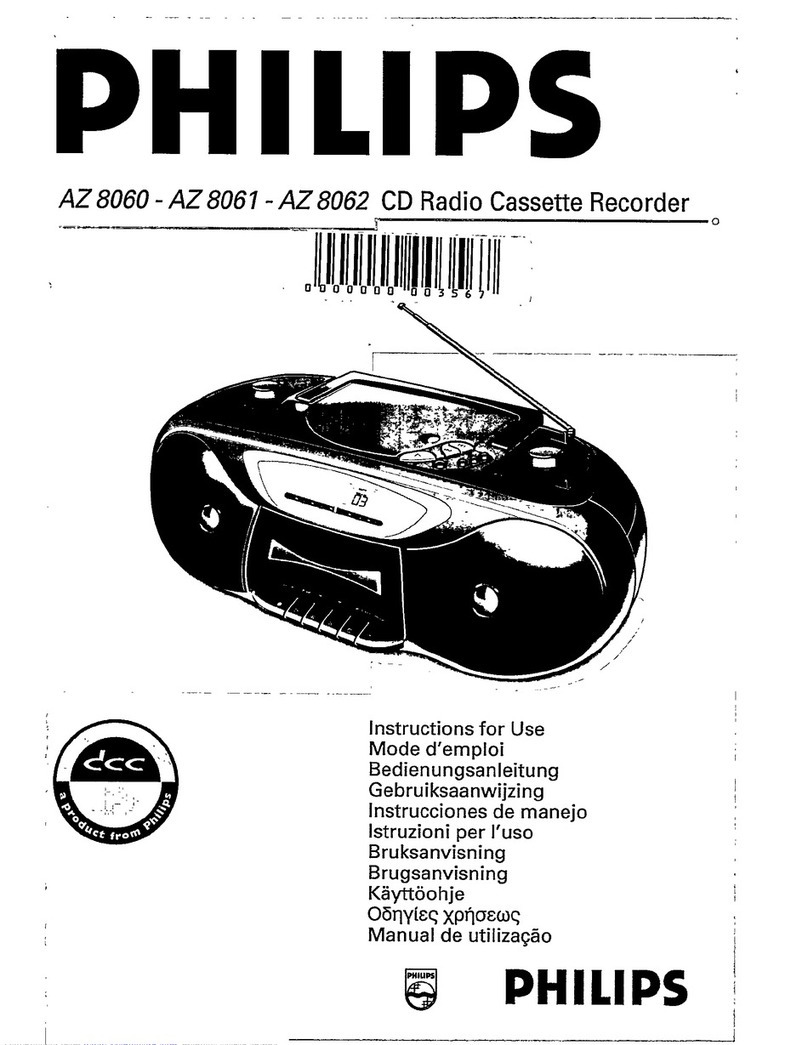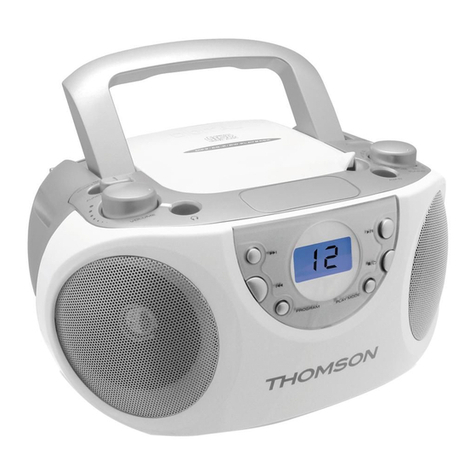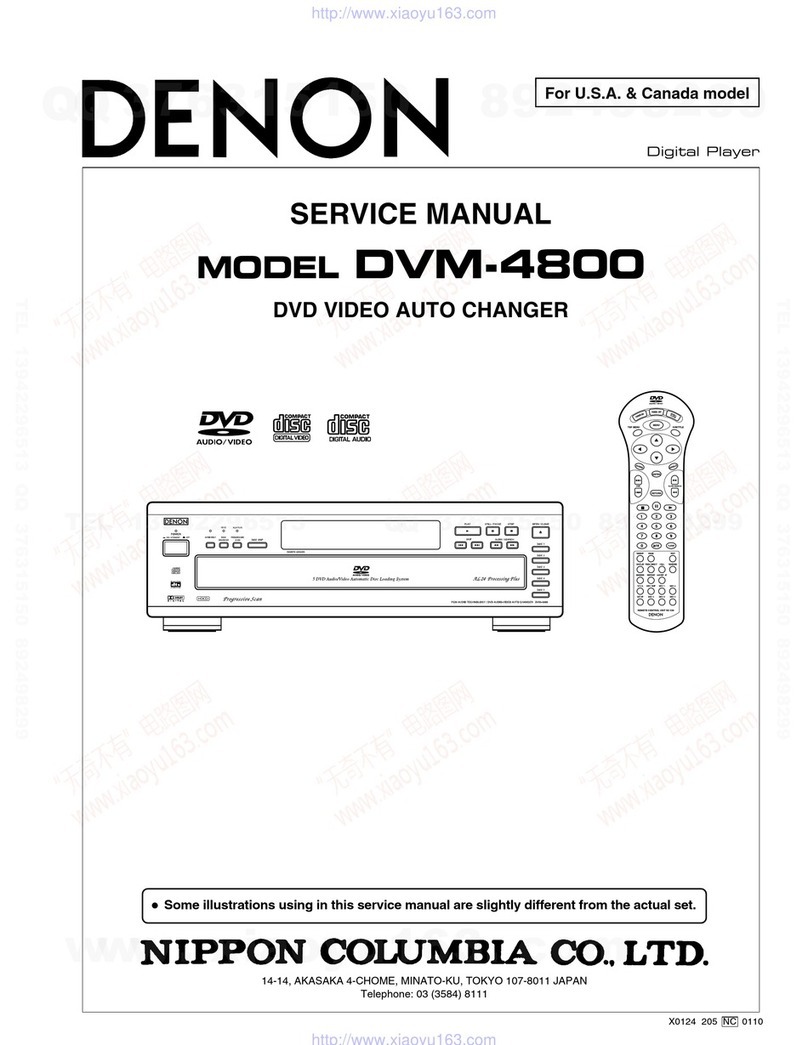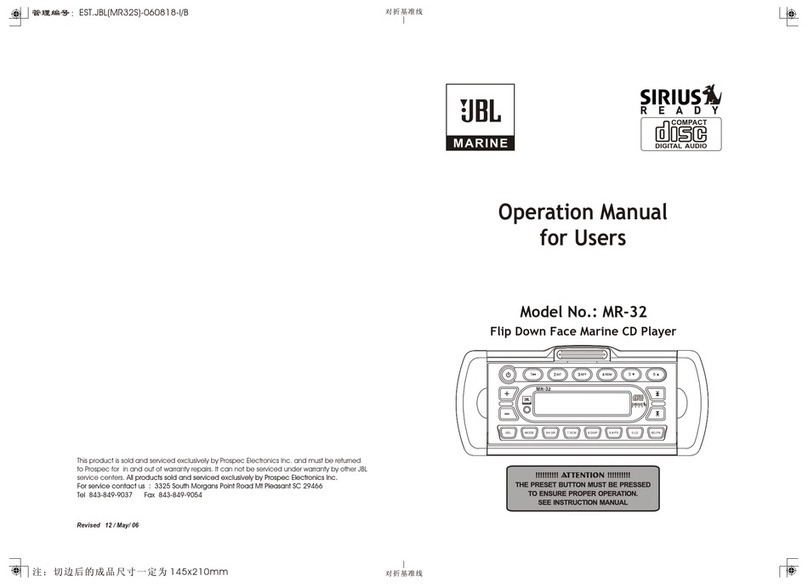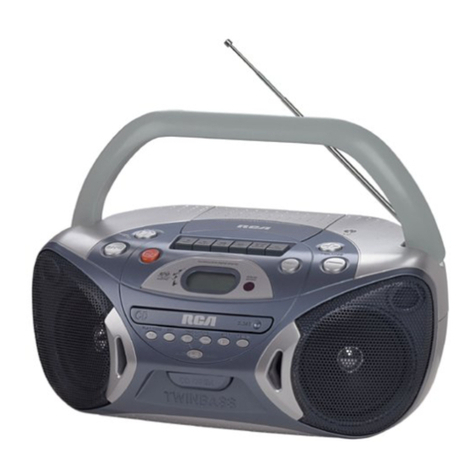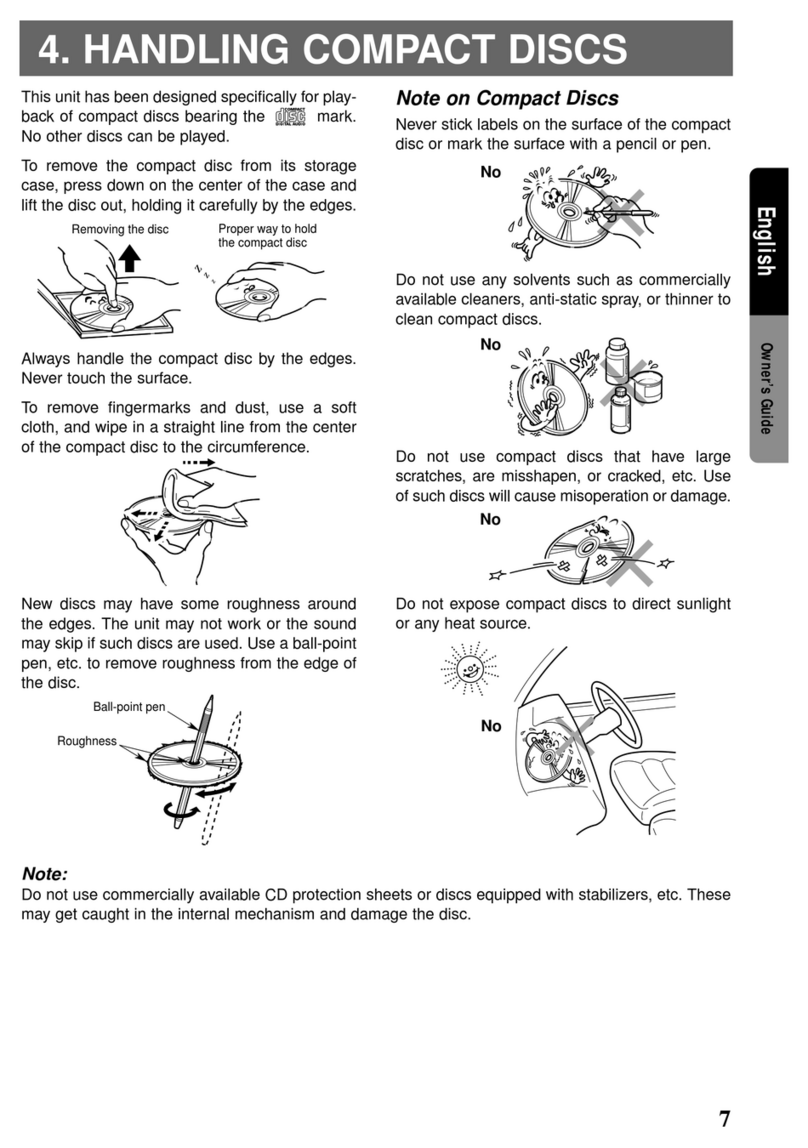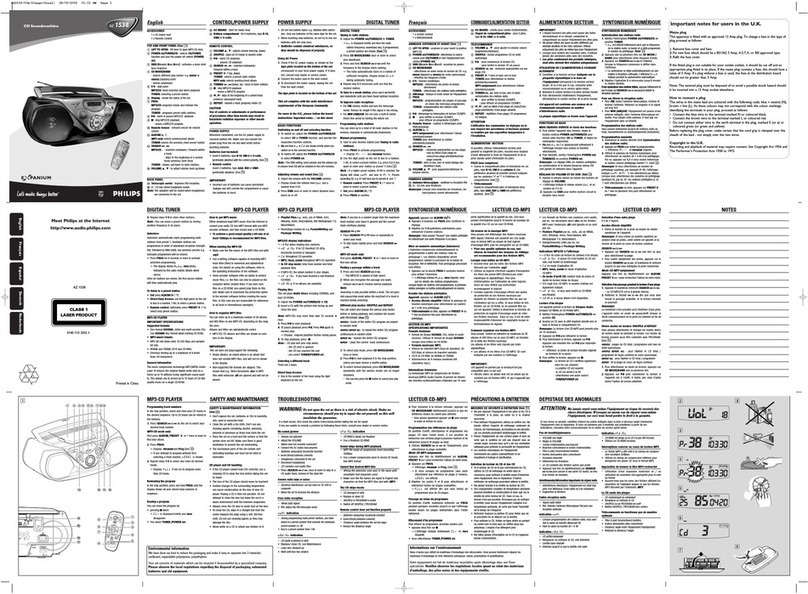3
CFD-G550CP
•UNLEADED SOLDER
Boardsrequiringuse of unleaded solderareprinted with thelead-
free mark (LF) indicating the solder contains no lead.
(Caution:Someprintedcircuit boards maynotcome printed with
the lead free mark due to their particular size.)
: LEAD FREE MARK
Unleaded solder has the following characteristics.
•Unleadedsoldermelts at a temperatureabout40°C higherthan
ordinary solder.
Ordinary soldering irons can be used but the iron tip has to be
applied to the solder joint for a slightly longer time.
Soldering irons using a temperature regulator should be set to
about 350°C.
Caution: The printed pattern (copper foil) may peel away if
the heated tip is applied for too long, so be careful!
•Strong viscosity
Unleaded solder is more viscous (sticky, less prone to flow)
than ordinary solder so use caution not to let solder bridges
occur such as on IC pins, etc.
•Usable with ordinary solder
It is best to use only unleaded solder but unleaded solder may
also be added to ordinary solder.
TABLE OF CONTENTS
1. SERVICING NOTES......................................................... 4
2. GENERAL............................................................................ 5
3. DISASSEMBLY
3-1. Cabinet (Upper) (1) Section ................................................ 9
3-2. Cabinet (Upper) (2) Section ................................................ 9
3-3. Cabinet (Front) Section .....................................................10
3-4. Control 2 Board, VOL Board ............................................ 10
3-5. LCD Board ........................................................................ 11
3-6. Power Board, Trans Board ................................................ 11
3-7. Control 1 Board.................................................................12
3-8. H/P Board, TU Board........................................................ 12
3-9. Main Board ....................................................................... 13
3-10. CD Block Section.............................................................. 13
3-11. Optical Pick-up ................................................................. 14
3-12. Tape Mechanism Deck ...................................................... 14
3-13. TC Board ........................................................................... 15
3-14. Main Belt, Sub Belt...........................................................15
4. MECHANICAL ADJUSTMENTS............................... 16
5. ELECTRICAL ADJUSTMENTS
Tape Section .......................................................................... 16
Tuner Section......................................................................... 17
CD Section ............................................................................ 18
6. DIAGRAMS
6-1. Block Diagram – CD Section –......................................... 19
6-2. Block Diagram – Main Section – ...................................... 20
6-3. Note for Printed Wiring Boards and
Schematic Diagrams .......................................................... 21
6-4. Waveforms......................................................................... 21
6-5. Circuit Boards Location .................................................... 21
6-6. Printed Wiring Board – CD Section – ............................... 22
6-7. Schematic Diagram – CD Section –.................................. 23
6-8. Printed Wiring Board – Tuner Section – ........................... 24
6-9. Schematic Diagram – Tuner Section – .............................. 25
6-10. Schematic Diagram – Main Section (1/2) – ...................... 26
6-11. Schematic Diagram – Main Section (2/2) – ...................... 27
6-12. Printed Wiring Boards – Main Section – .......................... 28
6-13. Printed Wiring Board – TC Section – ............................... 29
6-14. Schematic Diagram – TC Section – ..................................30
6-15. Schematic Diagram – Control Section – ........................... 31
6-16. Printed Wiring Boards – Control Section –....................... 32
6-17. Printed Wiring Boards – Power Section –......................... 33
6-18. Schematic Diagram – Power Section – ............................. 34
7. EXPLODEDVIEWS
7-1. Overall Section .................................................................. 42
7-2. Cabinet (Front) Section .....................................................43
7-3. Cabinet (Rear) Section ...................................................... 44
7-4. Cabinet (Upper) (1) Section .............................................. 45
7-5. Cabinet (Upper) (2) Section .............................................. 46
7-6. Tape Mechanism Section .................................................. 47
7-7. CD Mechanism Section .................................................... 48
8. ELECTRICAL PARTS LIST......................................... 49
